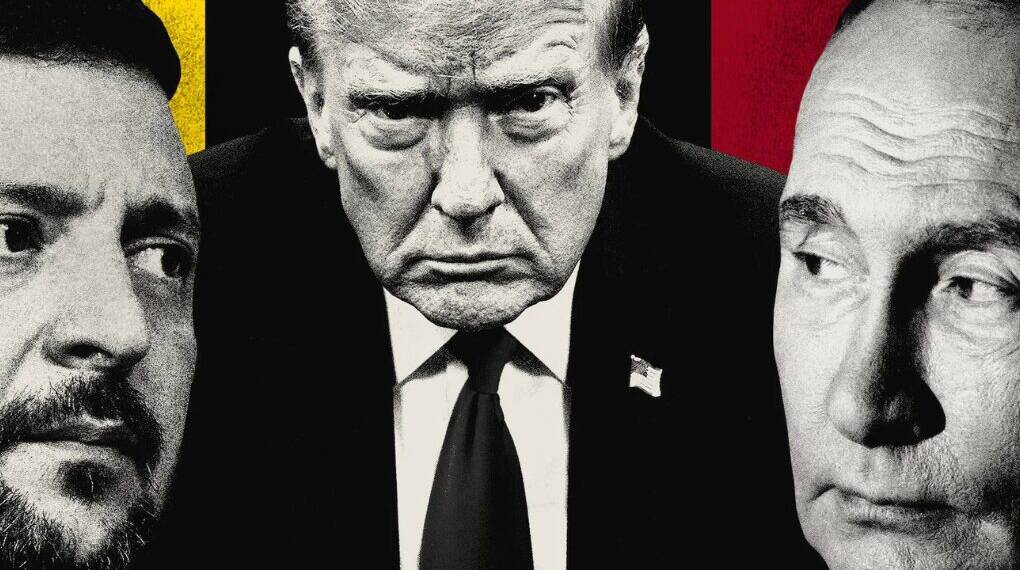A new level of devastation and high-stakes brinkmanship has emerged in the Russia-Ukraine conflict. Major Ukrainian cities are enduring waves of Russian missile and drone attacks, inflicting destruction and terror. Simultaneously, Ukraine has been able to strike back—not just on the front lines, but deep in Russia causing travel chaos and bringing the war to the Russian heartland. Underpinning all of this is the continual flow of support and weaponry from the US and NATO, whose strategic involvement is shaping the conflict in tangible and far-reaching ways.
Unfolding Catastrophe: Russia’s Overnight Onslaught
Over the course of one night, Russia launched an extraordinary assault—450 missiles and drones—across Ukraine. While Ukraine’s air defenses intercepted the majority, at least 23 got through, striking civilian areas and sparking fires in residential neighborhoods, supermarkets, and even a kindergarten.
In Kyiv, the destruction was palpable: buildings ablaze, subway stations transformed into shelters, and a city kept awake by fear and the constant wail of sirens. Testimonies from residents depict a society battered but resilient, helping each other through smoke and panic—a new normal forged by months of relentless attacks.
Kharkiv saw similar scenes as blaze after blaze erupted from missile strikes, damaging infrastructure that citizens rely on and leaving many in the dark, both literally and figuratively. The Kharkiv mayor’s reports of windows blown out and roads destroyed add to an already grim toll of civilian suffering.
What makes these raids especially dire is Russia’s use of advanced weaponry, including cruise missiles and Kinzhal hypersonic missiles, which pose formidable challenges to even the most advanced air defenses. This mix of traditional and next-generation arms drives up the casualty numbers and spreads a climate of terror, as nowhere in Ukraine seems fully safe.
Ukraine’s Riposte: Drone Warfare Hits Moscow
If Russia is ratcheting up its campaign of psychological warfare, Ukraine, too, is demonstrating its growing reach. Using long-range drones, Kyiv has managed to disrupt life in Moscow and beyond: major airports have been paralyzed, with thousands of travelers stranded amid delayed or cancelled flights, and airspace over the capital and surrounding regions repeatedly closed.
While Russian air defenses intercepted dozens of these drones, the psychological message was clear—Ukraine retains an asymmetric capacity to make life difficult for ordinary Russians and shake the illusion of invulnerability at home.
Also Read: Trump Asked Zelenskyy if Ukraine Could Strike Moscow and St. Petersburg with U.S. Weapons
The Western Backbone: US and NATO Military and Strategic Aid
Central to Ukraine’s continued ability to resist and retaliate is the steady backing from the US and NATO. This support is multifaceted:
Western-supplied systems have dramatically raised Ukraine’s interception rates, preventing many more Russian missiles from reaching their targets.
US and NATO satellite imagery and electronic intelligence systems give Ukraine a real-time edge, allowing more accurate responses to Russian attacks.
From anti-missile batteries to high-tech drone technology, Western arms deliveries and training programs have bolstered defensive and offensive Ukrainian capabilities.
This network of support enables Ukraine to hit back, even as it endures escalating bombardments. Yet, this aid is a double-edged sword—while it helps prevent further Russian advances and shields Ukrainian lives, it arguably raises the stakes of the war and draws Western capitals into a deeper, more unpredictable confrontation with the Kremlin.
Escalation and Stalemate: The Diplomatic Impasse
Calls for peace are growing. President Zelensky’s latest appeals for negotiations come as the human and material costs mount. However, hope for a meaningful ceasefire remains dim. The most recent talks in Istanbul fell apart in less than an hour as Russia pressed for far-reaching territorial demands and Ukraine, backed by Western consensus, refused to offer concessions on sovereignty.
The US and NATO are increasing pressure on Moscow and urging a negotiated settlement, but the fundamental objectives of both sides remain far apart.
Strategic Deadlock and Global Repercussions
The current state of play is a perilous equilibrium. Russia continues to escalate civilian-targeted missile attacks, while Ukraine—empowered by Western technology and support—extends the battlefield to Russian territory.
Each side’s efforts to tip the scales reinforce the deadlock, with civilians paying the price for every new round of escalation. Meanwhile, global markets and diplomatic networks are jittery, with every strike or airport disruption sending ripples well beyond Russia and Ukraine.
The deadly exchange of missiles and drones across Ukraine and into Russia, sustained by US and NATO backing, has entrenched a cycle of violence and mutual vulnerability. Civilians on both sides endure fear and hardship, while the shadow of escalation looms. As Western aid continues and both sides show little willingness to compromise, the conflict threatens to become not just a war for territory, but a wider test of alliances, technology, and the world’s appetite for risk and resilience in an uncertain era.








